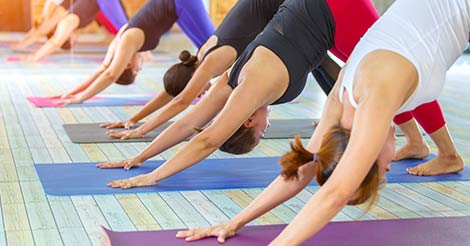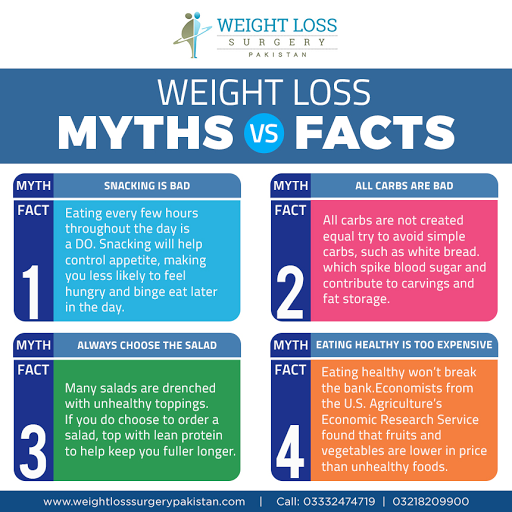
Did you realize that skiing has different calories? This article will cover the differences in downhill and cross-country ski, as well as the physical demands for each. Another type of skiing that can help you burn calories is off-piste. This type of activity is more difficult than traditional skiing so you will burn more calories. For tips on how you can make your skiing workout more enjoyable, consider starting skiing.
Skiing uphill burns more calories
When it comes skiing, you will find that uphill runs are more beneficial for your body than those on the downhill. However, you must be aware of several factors that affect calorie burn during skiing. These factors will help you optimize your workout and maximize your skiing experience. Here are some of the important factors to consider:
Cross-country skiers can typically burn around 550 calories per hour. Skate skiing can burn more calories than any other form of skiing and can consume up to 1,100 calories each hour. Nordic skiing offers a more strenuous form of skiing. They can burn about the same calories as standard skiers. Nordic skiing is a hike up steep hills. Nordic skiing burns roughly the same calories as running. So make sure to include moderate calories daily.

Skiing downhill burns more calories
Skiing's calories burnt depend on many factors. They can also vary from person to person. As it includes both aerobic as well anaerobic activities, downhill skiing can be one of the most effective winter sports in terms of calorie burning. Several researches, including those from Harvard Medical School, have shown that a person weighing about 155 pounds can burn around 532 calories per hour of downhill skiing. The number of calories burned during this activity is directly proportional to body weight, so skiers who are overweight should take note of their diet when planning their skiing schedule.
Experts recommend that beginners spend an hour on ski slopes before deciding to learn downhill skiing. Skiers should be able to make dynamic turns that strengthen their core muscles as well as increase their flexibility. To gain momentum while climbing the mountain, skiers should also use poles. While beginners burn fewer calories than experienced skiers, the overall workout is much more intense and results in more calories burned. For the best downhill skiing experience, you should consider a special fitness program.
Cross-country skiing burns a lot more calories than downhill ski
Cross-country skiing is a great way to burn more calories when you ski. The same amount of effort used by a seasoned cross-country skier can burn as much as 500 calories per hour for a 150-pound person. Cross-country skiing demands you to work harder, so you'll burn less calories.
Harvard Health Publications states that cross-country skiing can burn approximately 1,000 calories per hour. This is more than double the calories from downhill skiing. Skiing can also be done on snowshoes. An average person can burn between 380-500 calories per hour, depending upon the difficulty level. CPA can only give estimates for certain sports such as freestyle skiing.

Off-piste is a type of skiing that requires more effort.
Off-piste skiing requires more technical skills and more confidence in adjusting to mountain conditions. It also requires the mastery of a variety of skiing techniques, from short turns to controlling speed within a narrow corridor. You can start with the easiest terrain, then move to steeper slopes. By challenging yourself, you'll develop a mental and physical habit of skiering and turn more easily.
Off-piste skiing requires specific equipment, like wider skis for powder and stiffer skis for harder snow. The skis that are longer in powder will turn more easily. In crusty, you will need to learn how evenly to distribute your weight across both skis. In hard-pack snow, your weight should be equally distributed on both the skis and you need to remain seated. The slow and deliberate approach is required for thin snow that has protruding rocks. You can improve these skills with the right training.
FAQ
What Can You Lose in One Week?
Your current body fat percentage will determine how much weight you can lose. You need to determine how much weight loss you are looking for. Your BMI tells us how much weight you should lose in order to achieve this goal. If your BMI is 25 or greater, you're overweight. If your BMI falls below 30 you are considered obese.
For example, let's say you have a BMI of 28.7 and are 200 pounds. To reach a healthy weight, you would need to lose 70 pounds. To see if you're overweight, visit www.healthyminds.com/bmi/.
Once you know your BMI, you can use this formula to figure out how many pounds you'll lose per week:
(Your Goal Weight - Current Weight)/BMI * 7 Number Of Pounds Lost Per Week
You would need to do 2 weeks of exercise to lose 50 lbs in one month. This is equal to 56 days. Divide that by 7 pounds per week. That's 8.3 pounds per week.
You could also try this calculator from www.weightlosscalculator.net. It provides an estimate of the number of calories you should consume each day to lose 12 pound per week.
What foods will help me lose weight more quickly?
By eating less calories, you can lose weight quicker. Two ways to achieve this are:
-
Reduce the number of calories you take in daily.
-
You can burn more calories through exercise.
Reducing the number of calories you eat is easier said than done. It's no surprise that we are constantly bombarded with high-calorie fast food options. Here's a list that will help you lose weight.
-
Beans are high in fiber and protein. Beans are low in fat and therefore a great choice for those who are trying to cut down on their caloric intake.
-
Oatmeal is low on calories but high in nutrients, such as magnesium or potassium. Oatmeal also contains less sugar that other cereals.
-
Eggs are full of cholesterol and protein. Eating eggs at least twice a week can increase your metabolism, which helps you burn more calories.
-
Whole grain bread can reduce hunger pangs, so you might feel fuller for longer.
-
Dark chocolate is rich in antioxidants and flavonoids. These substances have been shown to improve heart health and lower blood pressure.
-
Cottage cheese is rich with calcium, which helps build strong bones. Cottage cheese also contains vitamin D, which can boost immunity.
-
Salmon is high in omega-3 fatty oils, which are good for brain development and heart health.
-
Green tea is chock-full with catechins. These compounds fight cancer and boost metabolism.
-
Broccoli is an excellent source of folic acids, which helps to lower homocysteine levels. Homocysteine concentrations that are too high have been linked with an increased risk for heart disease and stroke.
-
Yogurt, which is low in sugar, is a great option to add probiotics to your diet. Probiotics are essential for digestive health.
-
Berries can be a healthy snack choice that tastes great and is very nutritious. There are many great sources of vitamins, minerals in blueberries, strawberries, blackberries and raspberries.
-
Avocados are bursting with healthy fats. A half avocado contains 80 calories and plenty of fiber.
-
Nuts are a delicious snack option and a great source protein. All kinds of nuts are great choices, including almonds.
-
Sweet potatoes are another starchy vegetables that are high in beta carotene. They make your skin glow. The orange variety is particularly beneficial because they contain higher amounts of beta carotene than regular sweet potatoes.
How to Lose Weight?
People who are looking for a way to look good and lose weight are the top goals. People lose weight for a variety of reasons. They want to live longer, be healthier, and live longer. There are many ways to lose weight, and there are different types of exercises. These include strength training, cardio training, yoga and pilates. Each exercise type has its benefits and drawbacks. For example, if you want to burn calories, then walking would be your best option. For building muscle mass, weight lifting is the best choice. This article will discuss which exercise and how to lose weight.
First, you must decide what kind of diet plan to follow when trying lose weight. Not necessarily that you need to eat less. Rather, you should eat fewer processed food and avoid junk foods. At least 2200 calories is recommended daily. To lose weight quickly, you need to reduce your calorie intake. This will help you lose weight faster.
You can lose weight quickly by getting active. Exercise can help you lose calories and speed up your metabolism. You must combine exercise and a healthy diet to lose weight. You lose energy when you exercise and you won't eat as much. You will see a faster rate of fat loss if you exercise regularly. Regular exercise is a great way to keep fit and healthy. They can help you keep fit and prevent conditions such as heart disease, diabetes, hypertension and obesity.
Try to walk as often as possible. Walking can burn around 500 calories an hour. Walk 30 minutes per day to burn around 1500 calories. This will result in a loss of 1 pound per week. You can also run for 10 minutes or jog. Running burns approximately 1000 calories an hour. For a goal of losing 5 pounds in 3 week's time, you should run for 20 mins three times a week.
In conclusion, the best way to lose weight is to combine exercise with healthy eating habits. You should find a balance of these two elements.
How long should I fast intermittently to lose weight
It is not as easy as you think. There are many factors that need to be taken into consideration when deciding how many days of fasting is necessary for optimal fat loss. These factors include:
-
Your age. You may find intermittent fasting too difficult if you're younger (under 40) because you have less time between fasts. On the other hand, if you're older (over 60), you may find that you don't have enough energy to sustain an extended period of daily fasting.
-
Your current body composition. Your current body composition. If you have a lot more muscle mass than you need, then you will likely be more successful with longer fasting periods. You may find shorter fasting more beneficial if your muscle mass is low.
-
How physically active are you. If you exercise regularly, you may need to extend your fasting window to ensure that you still get adequate rest between workouts.
-
Your medical history. Patients with certain medical conditions, such as heart disease, diabetes, or cancer, may need additional fasting monitoring.
-
What is your tolerance for stress? Stress can cause us to eat more. You may need to extend your fasting times in order to avoid this problem.
-
Your diet. Certain diets, like ketogenic diets, may require even longer fasting periods.
-
How much sleep you get. Also, a lack of sleep has been linked with increased appetites and decreased metabolism. It may take some trial and error before you find the right combination.
-
How much protein you eat. Consuming more protein helps to stabilize blood sugar levels. This could lead to lower insulin levels. This will allow you to fast longer.
-
People who want to gain weight or lose it will need to fast for longer periods of time than those trying to lose.
-
How many calories did you consume during your fasting period? You might lose more fat if your daily calories are lower than those you consume.
-
Your overall fitness level. The metabolic rate of fast people who are fit is higher, which means they burn more calories each day.
-
Your gender. Men have greater appetites than women and may need to fast longer. Women generally have smaller appetites, so they may only need to fast for about 20-30 minutes every morning.
-
Your lifestyle. Are you someone who gets plenty of physical activity? Do you exercise multiple times a week or do you just go to the gym? Is your job a long, sedentary one? All of these things can affect the amount of time you should fast.
-
What amount do you spend on food each month? Eating healthy foods doesn't necessarily mean spending much money on groceries. You can save money by buying whole grains instead of white bread, fruits instead of candy bars, and lean meats instead of fatty cuts.
-
It's important to manage your hunger. You might not have to fast as much if your hunger isn't a problem.
Statistics
- According to a study sponsored by the American Council on Exercise, a person weighing around 140 pounds (64 kg) would burn 108 calories at a 30-minute beginner's Pilates class or 168 calories at an advanced class of the same duration (26). (healthline.com)
- A 12-week study in 20 women with obesity found that walking for 50–70 minutes 3 times per week reduced body fat and waist circumference by an average of 1.5% and 1.1 inches (2.8 cm), respectively (healthline.com)
- One 6-month study showed that simply doing 11 minutes of strength-based exercises 3 times per week resulted in a 7.4% increase in metabolic rate, on average. (healthline.com)
- It's estimated that half of all American adults attempt to lose weight every year (1Trusted (healthline.com)
External Links
How To
How to exercise to lose weight
It is one of best ways to lose weight. However, many people do not know how to exercise correctly. Exercise should include cardio exercises such as running, cycling, swimming, walking, etc., and strength training exercises such as lifting weights, making pushups, pull-ups, squats, lunges, etc. Combining these two types is the best way for you to lose weight. Find friends who are open to joining you on your exercise journey. You have two options: you can join a gym or just walk around your neighborhood. No matter what type of exercise you choose, it is important to stick with it. It's easy to get off-track when you first begin working out. If things don't go your way, don't lose heart. Just keep going!